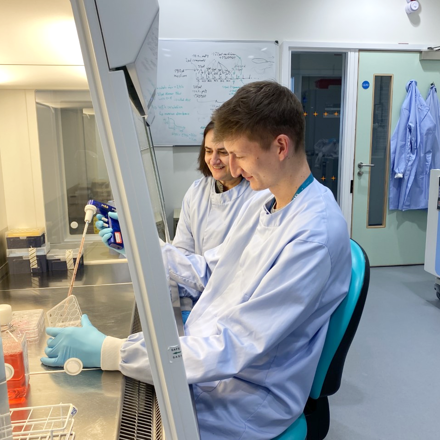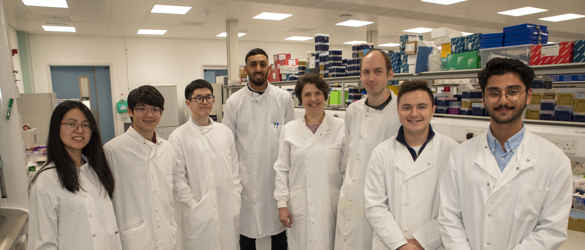Wrong place, wrong time: protein delivery and macular disease

Dr Linda Troeberg, University of East Anglia - £101,958
The health of many tissues in the body, including the retina, depends on their components being delivered to the right place at the right time. When this delivery system goes wrong, it can lead to imbalances that stop tissue functioning properly.
This project focused on a protein called TIMP-3, which plays an important role in maintaining healthy tissue. Faults in the TIMP-3 gene are linked to both age-related macular degeneration (AMD) and Sorsby Fundus Dystrophy (SFD), an inherited form of macular disease.
By understanding how the TIMP-3 protein produced from this gene is delivered around tissue when in healthy and mutated forms, we can better understand the mechanism of these two macular diseases.
What was the problem?
In earlier research into osteoarthritis, Dr Troeberg discovered that incorrect delivery of the TIMP-3 protein can accelerate joint damage. She believed a similar problem could be happening in AMD and SFD, with disrupted delivery of TIMP-3 and other proteins leading to drusen formation, the build-up of deposits that mark the early stages of retinal damage.
What did the project achieve?
The team grew retinal cells in the lab and observed how these cells delivered TIMP-3 protein to nearby tissues over time. They then compared this process with cells containing an altered version of the TIMP-3 gene, as found in patients with SFD.
In healthy retinal cells, TIMP-3 delivery was shown to be tightly controlled, ensuring that just the right amount of protein was present at any moment. However, the team discovered that in the retina, TIMP-3 delivery is controlled by a different molecule than in the joints.
Dr Troeberg describes this as “TIMP-3 taking a taxi in the joint and a bus in the retina” - the destination is the same, but the details of travel are different. This difference could allow future treatments to target the disrupted TIMP-3 delivery in the retina specifically, without affecting delivery elsewhere in the body.
The researchers also found that some mutated forms of TIMP-3 are delivered more slowly, which may explain why they accumulate in drusen and contribute to retinal damage.
What next?
These findings suggest that similar delivery issues may also contribute to drusen build-up in AMD. The work opens up the possibility of developing new drugs that restore protein delivery in the retina.
In the future, genetic testing could also help identify people at greater risk of AMD due to TIMP-3 mutations, enabling earlier diagnosis and treatment.
See our other projects
Since 1987 the Macular Society has invested around £10 million in over 100 research projects.
Explore more research
Beating macular disease through funding medical research and improving the lives of those living with macular disease.
Get the latest research news from the Macular Society
To hear about life-changing research and treatments, subscribe to our monthly enewsletter today. Together we can Beat Macular Disease.
Sign up to our free email newsletter



